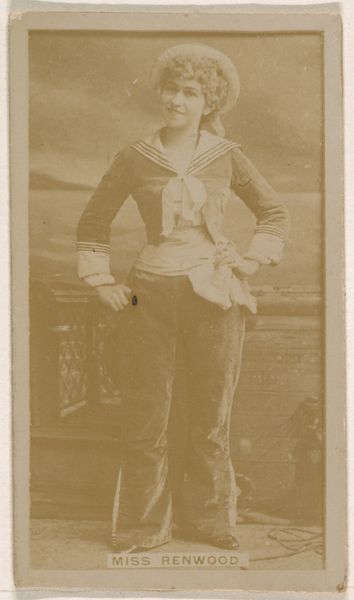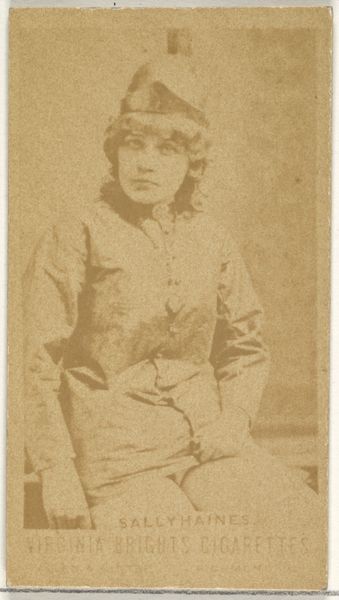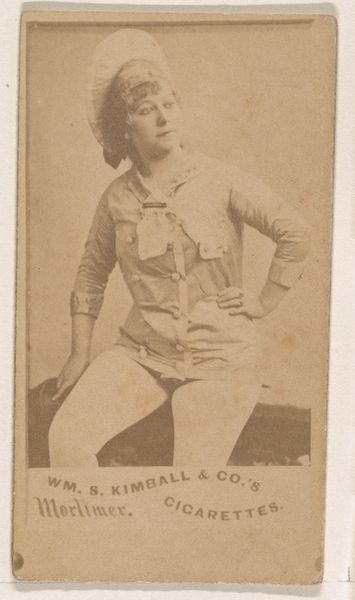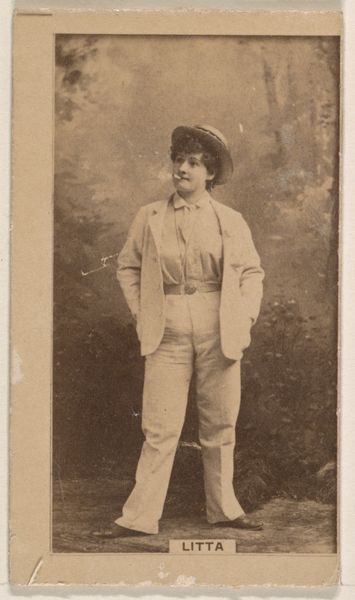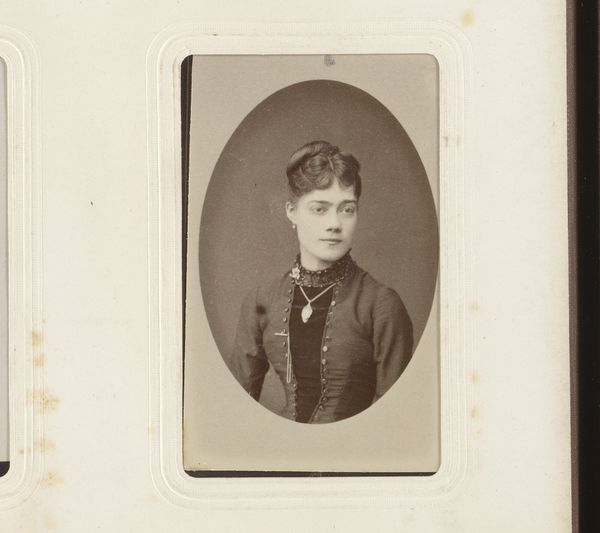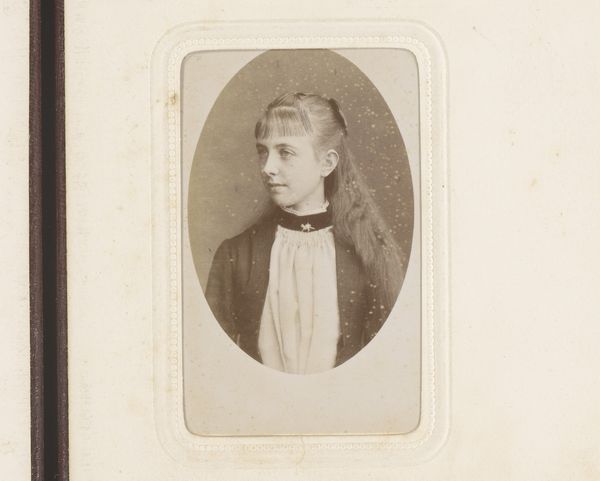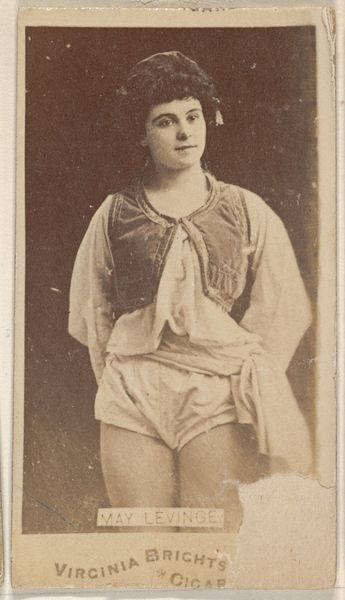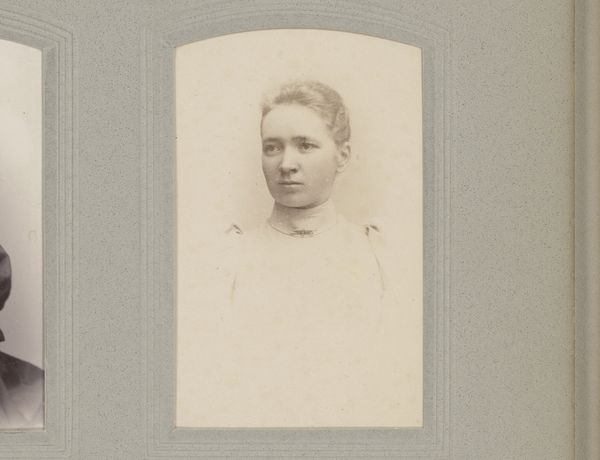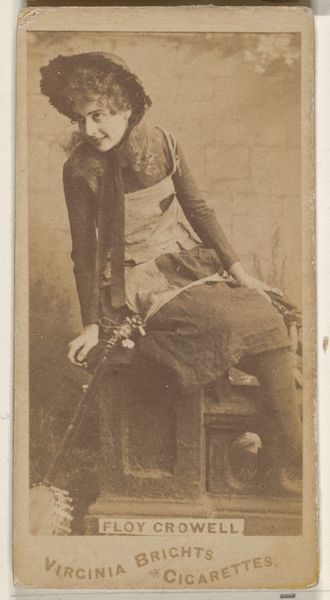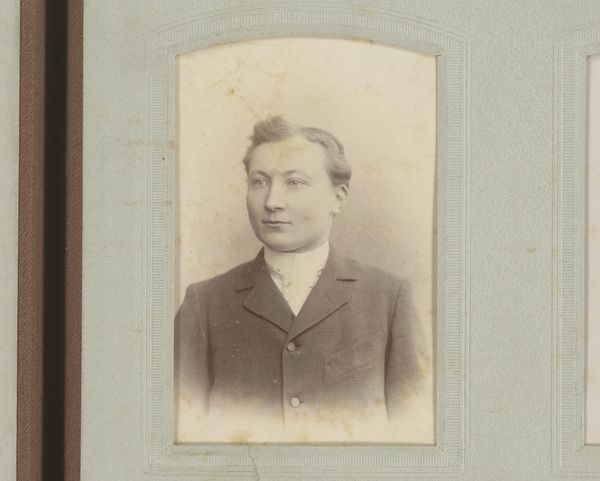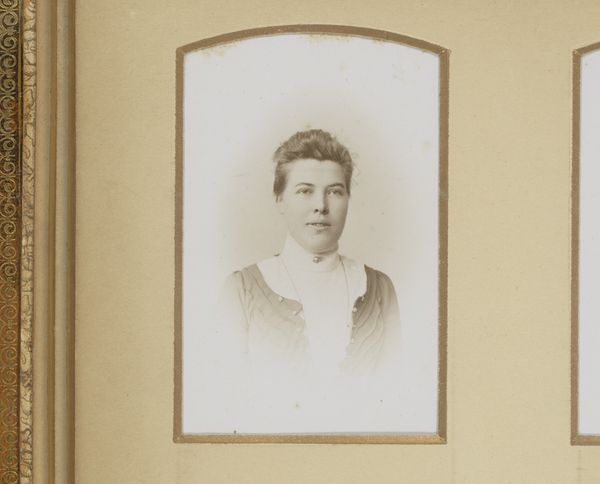
Portret van een (vermoedelijk) Engelse matroos, staand met hoed en pijp in de hand c. 1870 - 1900
0:00
0:00
photography, gelatin-silver-print
#
portrait
#
pictorialism
#
photography
#
gelatin-silver-print
#
genre-painting
Dimensions: height 103 mm, width 62 mm
Copyright: Rijks Museum: Open Domain
Curator: This is a photograph, a gelatin-silver print likely dating between 1870 and 1900, attributed to A.F. Vogel. The subject is titled, "Portret van een (vermoedelijk) Engelse matroos, staand met hoed en pijp in de hand," or, "Portrait of a (Presumed) English Sailor, Standing with Hat and Pipe in Hand". Editor: The immediate feeling I get is one of… worn intimacy. It feels like looking at an image handled a lot, viewed perhaps, countless times. The light, or lack thereof, reinforces the effect; all browns and sepia, giving it an antique warmth. Curator: Indeed. Note the sailor's garb, his hand relaxed around a pipe; potent signifiers of maritime life, adventure, but also perhaps, the working-class life of a common seaman. The image utilizes pictorialism, a style common at the time which mimics painterly effects. It lends an almost mythical quality. Editor: Absolutely, and the photograph's materiality cannot be ignored here, particularly when deciphering how meanings were originally constructed around such objects. Considering the gelatin silver print—an accessible technique—opens us to a narrative of commodification. Photography, once a novelty, was becoming an increasingly standardized process, one readily available for mass consumption, thereby suggesting wider social shifts toward affordable portraiture. Curator: Good point! Consider, though, that it presents not just a record, but an aspirational image. The softened focus and carefully composed details lend a timeless dignity to the subject, perhaps consciously mirroring historical genre paintings depicting romanticised aspects of working class lives. The symbolism embedded here – of pipe, hat, seafaring clothes - creates an archetype as much as documenting an individual. Editor: Archetypes yes, but let’s not dismiss how this relates to actual conditions! A portrait like this wouldn’t simply signal dreams or aspirations; but real bodies aboard real ships, engaging with expanding global markets of the time. Such a thing holds an economic weight. Also note how the studio setting flattens those conditions, mediating even something as "real" as globalized trade through manufactured backdrops and set props. Curator: Agreed; an unavoidable layer of presentation to unpack in its symbolic worth. Even today, its visual language offers something between documentary and sentimental yearning. Editor: Exactly. These old images reveal fascinating interactions of social status, commodified processes, and, crucially, visual legacy, offering glimpses into shared cultural production and exchange.
Comments
No comments
Be the first to comment and join the conversation on the ultimate creative platform.

